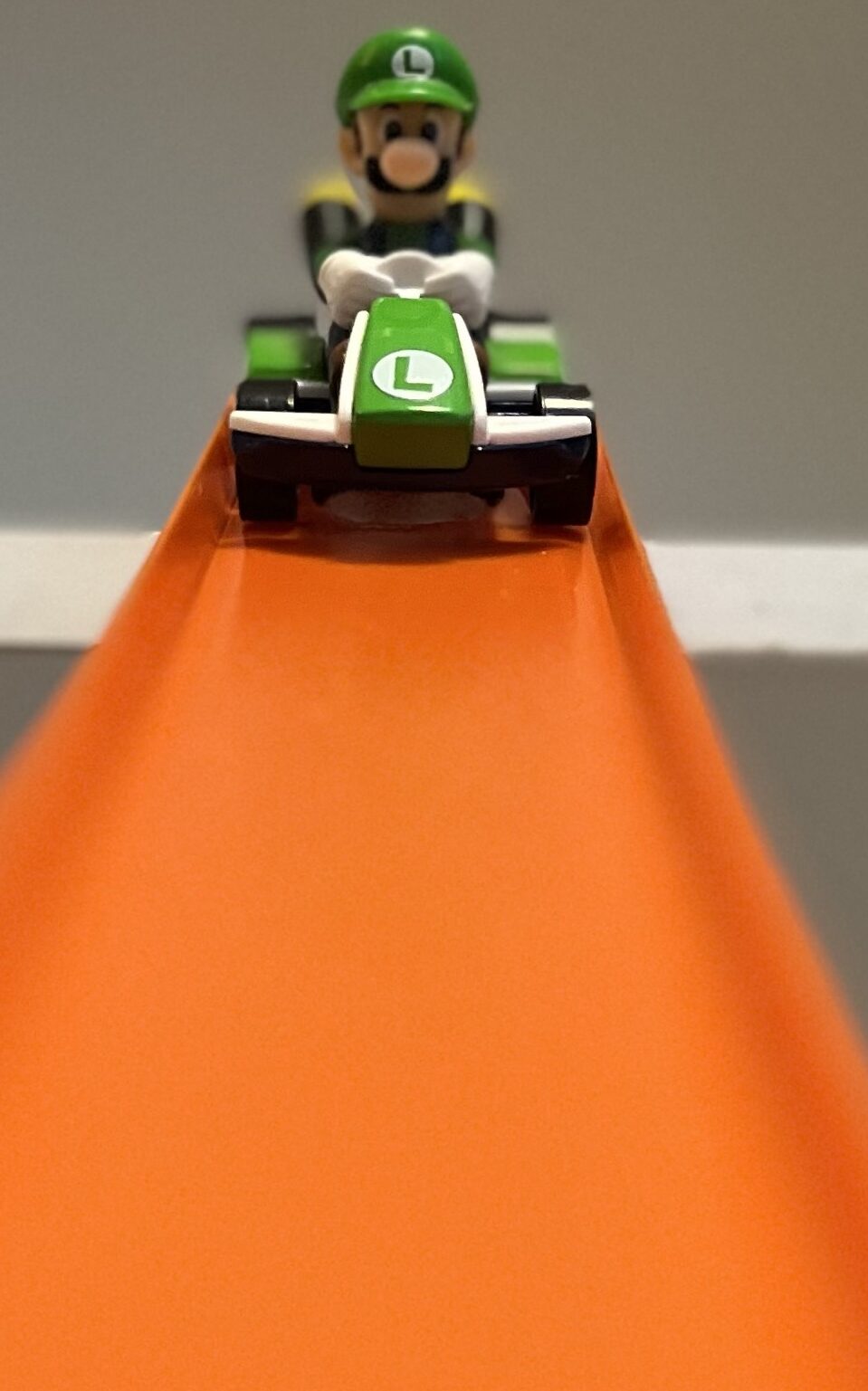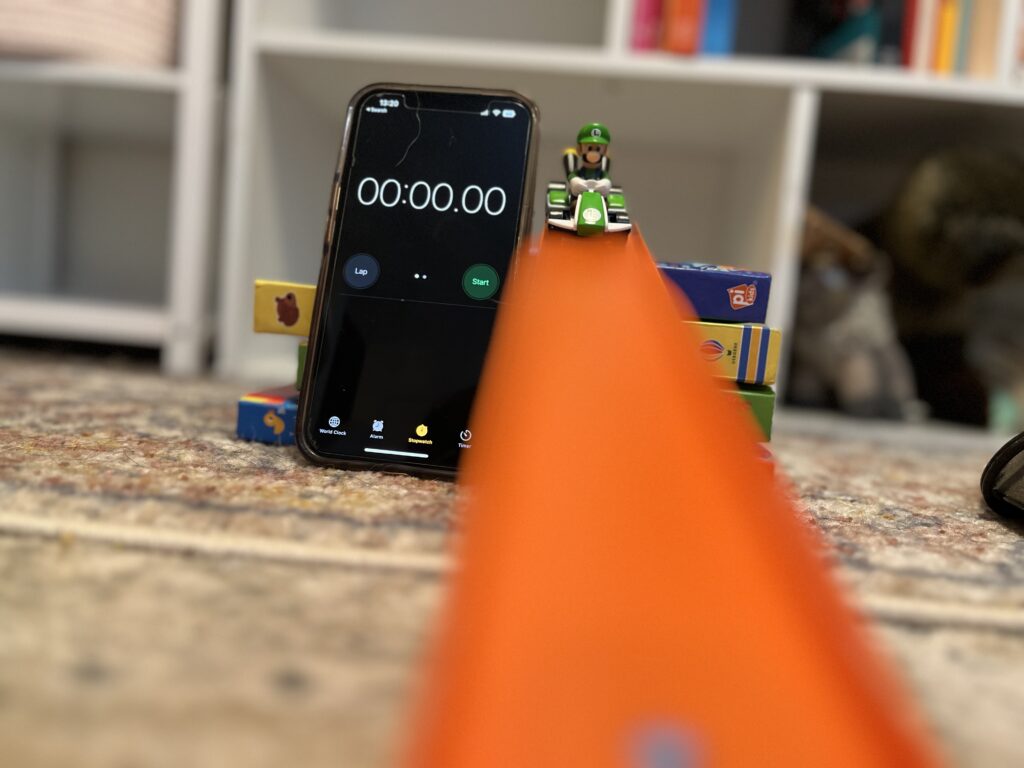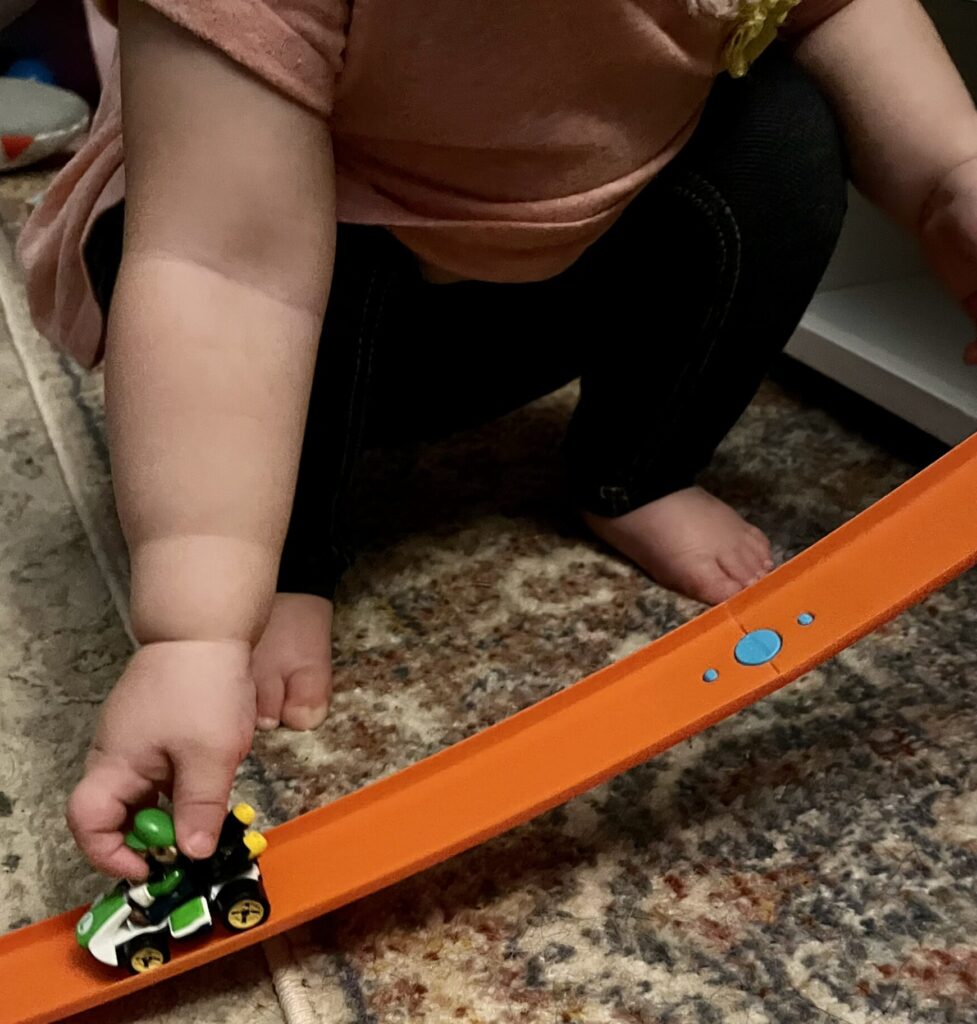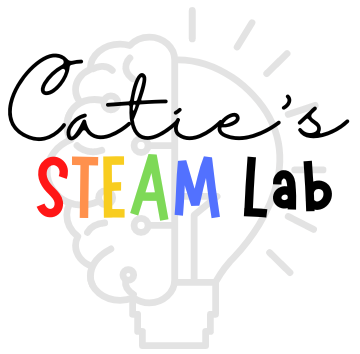
When children transition into my classroom, one of the first things they run for are the cars. In my classroom I have two car ramps that look oddly like the streets of San Francisco, and a basket full of different cars. Without fail, the first thing they do is set up the ramps and launch the cars across the classroom. Those cars sail across the room like Lightning McQueen! My only rule with these toys is that carpet toys stay on the carpet. Much to my delight, one child looked up at me while I was reminding them of our rule and said, “But they don’t roll on the carpet. They roll fast on the floor”. That is Newton’s 1st Law of Motion. An object in motion will stay in motion, unless acted upon by an outside force. Yes, I know. AMAZING! It makes your teacher heart jump just a little bit! And that moment right there, inspired my idea for this STEAM project!
To Roll or Not to Roll
This post may contain affiliate links, which means I’ll receive a commission if you purchase through my links, at no extra cost to you. Please read full disclosure for more information.
For this STEAM project, I gathered different objects around my house and the classroom. I gathered things I knew would roll and things that wouldn’t roll. Some of the things I gathers were:
- Toilet paper tubes
- Crayons
- A bouncy ball
- Car
- A square block
- A spoon
- A stacking ring
For set up, I placed one ramp onto the carpet, one on the linoleum flooring, and created a ramp with blocks. I thought it would be important to create this flat ramp, so that the children can analyze the difference between a flat ramp and a hilly San Francisco ramp.
I utilized my mystery bag (a gift bag that no one can peek into), I put all of these objects into the bag and my class would take turns pulling out the items. When an item was picked out, we could discuss if the item would roll or not. What I wasn’t expecting were the different perspectives children would have when answering the question. For example, one child answered that the toilet paper tube would not roll because it will stand up tall. Another child said that it would roll if it was laid on its side. Well, they didn’t give their reasoning…I filled that part in. I gave both children an opportunity to demonstrate their point of view. They learned that they were both correct.
Long story short, we spent 30 minutes rolling things around the classroom down the ramp.
Adaptations For This STEAM Project
At Home
The probability that you have my San Francisco ramp at home is not all that high. That’s okay! You do not need to go out and buy a car ramp for this STEAM project! Any flat surface will do! I have a canvas laying around. I have textbooks and binders up in the office. I have a lid to storage bin. I have an old box that I can cut up. Flat and smooth are pretty much the only criteria here, but as I’m thinking about it, it doesn’t even need to be flat and smooth! Different textures can all teach something valuable about motion! Have your child help you build the ramp! What kind of ramp would make a car go faster? What kind of ramp would make a car go farther? How would you build a ramp? All these questions will help support their growing knowledge of motion!

You also need something to roll. Toilet paper tubes work really well! If you have cars, you can use those. Bouncy balls are a fun one too! My suggestion when you start this activity is start with a couple of rounds of things you know will roll and go far! Find a wide-open space and launch them! Engaging the children in the STEAM project is key to opening up the discussion about motion and have them investigate what works and what doesn’t work. When you get to an object that doesn’t roll, build up the anticipation! Ask them, what do you think will happen? If it is going to roll how far do you think it will go? If it doesn’t roll, why do you think it didn’t roll?
That’s all you need!
Age Modifications
18 months
I tried this activity with Evie. At 18 months, she isn’t going to be communicating making a ramp taller or shorter. She is only interested in making things roll. This was her first introduction to cars. I was only slightly concerned that she would try to eat it. I kept it as simple as possible! I had a car ramp and a single car. Interestingly enough, the only toy car I have in my house is a Luigi Mario Kart Hot Wheel toy. Instead of being only a car, the car has a driver in it. This worked so well! The driver in the car gave Evie something to grab and hold onto! It made it super easy for her to push the car up the ramp and move it around! I’d like to say it was intentional, but it wasn’t. It was just a happy coincidence.

I would say that I didn’t do much in the way of teaching here. Rather, I facilitated her independent learning and exploration during this STEAM project. At the beginning I showed her the ramp and what would happen if I put a car on it and rolled it down the ramp. She was AMAZED! After swinging the ramp around like a lightsaber, a time or two, she started adjusting the ramp height on her own. She placed it on a flat surface and moved the car around. She propped it up on her table to make a steep ramp. She tried to put it on her bookshelf…that required some assistance from Mom. She even used a dog toy to prop it up. So, while we didn’t do the same processes that we did in my classroom; she still explored the concepts of motion during this activity. The important part of this activity is to be descriptive when communicating with a child this age, even a child still developing language skills. Things like “That car went fast” or “Its hard to push a car up a steep ramp” will start to make connections for your child.

5+ years
For older children, I would recommend creating a more structured scientific design! Create a graphic chart! Ask your child if they think an object will roll. Record their answer. Roll the object and record if it rolled or not. You can record how far an object traveled. You can ask the child to reflect on why they think an objected rolled or didn’t roll. This will demonstrate the fundamentals of experimental design and the scientific method! This is a great opportunity to introduce a writing element into the lesson! Have your child write out their predictions!
Add a stopwatch! Does a car actually go down a ramp faster or slower depending on its angle?

You can integrate art into this lesson by giving your child different materials to create their own ramps. Give them craft sticks, cardboard, glue, tape, rubber bands, paper, or any other material you have on hand and task them with building a free-standing ramp!
STEAM Project Integration
Engineering
Engineering comes into play during this activity when your child starts creating their own ramps! Give your child different materials to build a ramp. Watch them create and construct their own ramps. Maybe it will look like my San Francisco ramp or maybe it will curve at the bottom and launch a car into the air! This process of creating their own ramps will allow them to explore different motions with their objects. This is a great opportunity to demonstrate how structure and function are closely related!
Science
I love SCIENCE. It is my belief that children are natural born scientists. Not only do children learn about Newton’s Laws of Motion with this activity, but also, they can start building those fundamental investigation and inquiry skills. Does the car go faster if the ramp is taller? Get a stopwatch and test it! Create a ramp at different heights! I used books, halfway up Evie’s bookshelf and from the top of her shelf! This will create an opportunity for children to explore different elevations and angles and speeds! Children will learn to ask directed questions and create a method to find their own solutions. The scientific method (simplified) is having an observation or question, make a hypothesis, test your hypothesis, modify, or justify your hypothesis. Children can do all of those steps in this STEAM project. Given, it is not the formal, written version, but these skills are still being built. Investigating their world and cause and effect are all important elements in a science lesson!
Thank you all for taking the time to read this post! How far did your cars go? Did you build your own ramp? I love hearing about your explorations! Feel free to leave a comment and tell me your child’s discoveries!

